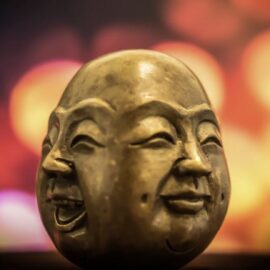

This article is an excerpt from the Shortform book guide to "Eat Pray Love" by Elizabeth Gilbert. Shortform has the world's best summaries and analyses of books you should be reading.
Like this article? Sign up for a free trial here .
What is the art of doing nothing? How is this idea explored in Eat Pray Love?
The art of doing nothing, or il bel far niente, is an ideology that promotes the idea of enjoying the feeling of doing nothing, of finding pleasure in freedom. As an American in Italy, Elizabeth Gilbert struggled to embrace this idea.
Keep reading to find out about how the art of doing nothing is explored in Eat Pray Love.
The Art of Doing Nothing (Il Bel Far Niente)
Although Gilbert went to Italy to immerse herself in a life of pleasure and beauty, she found the first difficult to attain. Her working-class upbringing and American idealism made pleasure-seeking behaviors uncomfortable. Like many Americans, she was unable to fully relax and enjoy the art of doing nothing in Eat Pray Love.
In America, we seek ways to stay entertained or busy. We work long hours and enjoy small moments of downtime in between. Italians, on the other hand, work to be able to experience pleasure. The Italian expression bel far niente translates to “the beauty of doing nothing.” They see leisure time as their reward for hard work, not something to fill with activities until it’s time to be busy again.
This difference in perspective was hard for Gilbert to get past. For weeks, she questioned whether she’d earned the pleasure she sought. She wondered how to maximize her pleasure experiences and considered researching the best ways to achieve pleasure. Then, one day, she realized the only question she needed to ask was what pleasure meant to her, and so began trying to enjoy the art of doing nothing, or il bel far niente.
Each day, she asked herself what would bring her the most pleasure. In a country full of art and history, the obvious choices were museums, musical performances, or exploring the landscape. But Gilbert wasn’t interested in those activities. To her surprise and delight, she found she only desired to eat and speak the language. She focused on those pursuits and experienced a sense of freedom never felt before.
In addition to the art of doing nothing in Eat Pray Love, Gilbert had many opportunities to enjoy the pleasure of speaking Italian. She learned almost 20 words a day and worked hard to converse properly. She wasn’t fluent like she wanted to be, but she was getting better and understanding more. Her friends were also great sources of information.
She and Giovanni had many conversations about idiomatic expressions in both languages. She taught him the American expression “I’ve been there” in response to emotional struggles. He was confused, wondering where “there” was. Gilbert explained that sadness is like a place you have to find your way out of. Giovanni offered the Italian version, which roughly translated to “I’ve experienced the same on my skin.” The phrase signified being scarred in a similar way.
Luca was also instrumental in teaching Gilbert new phrases. He took her to a soccer match and translated the curse words and expressions the fans shouted. Learning Italian slang helped Gilbert feel more ingrained in the culture. It also helped her converse more intelligibly with others. This skill helped her find more pleasure with the language. Still, the pleasure she got from food was hard to beat—even more than the art of doing nothing in Eat Pray Love.

———End of Preview———
Like what you just read? Read the rest of the world's best book summary and analysis of Elizabeth Gilbert's "Eat Pray Love" at Shortform .
Here's what you'll find in our full Eat Pray Love summary :
- Why Elizabeth Gilbert needed to divorce her husband
- How she was able to find joy again in Italy
- How Gilbert was able to find balance with Felipe






